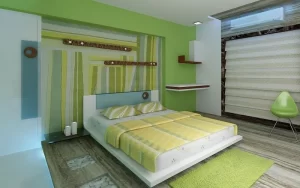Condo Dining Redefined: Innovative Dining Area Designs

In the world of condominium living, where space is frequently at a premium, reinventing dining spaces becomes an artistic exercise in both efficiency and design. The dining area of a condo is vital, providing not only as a place to eat but also as a meeting site for residents. In this article, we will look at unique dining area ideas specifically for condominiums, demonstrating the ability of interior designers to convert constrained spaces into elegant and useful eating areas.
Multi-Functional Furniture
Expandable dining tables are an excellent example of clever space-saving solutions for condo living. Interior designers create eating spaces with tables that may be small for regular usage but enlarged to accommodate guests for celebrations. This space-saving solution improves utility without sacrificing elegance.
Convertible furniture brings adaptability to condo dining rooms. Interior designers incorporate eating tables that may function as workstations or storage units. This creative method enables residents to use their eating room for a variety of activities, making the most of every square inch.
Open-Concept Designs
Open-concept designs are becoming popular in condo living, and interior designers expertly blur the lines between kitchen and dining rooms. This design technique produces a flowing living environment in which the dining area extends into the kitchen. It encourages a sense of community by allowing residents to converse while cooking meals.
Interior designers frequently use built-in seating options, such as banquettes or window seats, to maximise available space. These elements not only save space but also create a cosy and intimate environment in the eating area. Custom cushions and upholstery provide further comfort, transforming the dining area into a fashionable and pleasant enclave.
Innovative Light Fixtures
In condo dining spaces with limited space for extensive décor, interior designers use striking pendant lights as focal pieces. Hanging pendant lights over the dining table not only illuminates the room but also adds a sense of elegance. Designers experiment with numerous forms, materials, and styles to enhance the overall look.
Interior designers use adjustable lighting fixtures to create a varied mood. Dimmable lights or fixtures with adjustable arms enable homeowners to modify the intensity of illumination according to the situation. This dynamic lighting strategy offers versatility to the eating area’s mood.
Mirror Magic
Mirrors are interior designers’ hidden weapons for improving the sense of space. Mirrors strategically placed on walls may provide the feeling of spaciousness in condo dining spaces with limited square footage. Mirrored surfaces reflect light, making the area appear brighter and more spacious.
Interior designers use mirrored furniture to accentuate the impact of mirrors. Mirrored dining tables or cupboards give a sense of luxury while also visually expanding the eating room. This creative use of mirrors adds a level of refinement to apartment life.
Vertical Storage Solutions
Vertical space is critical in condo dining spaces, and interior designers use floating shelves and cupboards to maximise storage. These features not only provide useful storage options for dining necessities, but they also function as ornamental components. Designers frequently display beautiful dinnerware or décor on open shelves, giving individuality to the room.
Interior designers may use foldable, wall-mounted tables in condos with severely little room. These clever solutions may be folded away when not in use, saving important floor space. When needed, they unfold into useful dining surfaces, providing the convenience of a dining space without leaving a permanent imprint.
Colour palette and Visual Continuity
Interior designers carefully choose colour palettes to create an airy atmosphere in condo dining spaces. Neutral tones, such as white, light grey, or soft pastels, help to create an open and clean feeling. These hues reflect light, resulting in a visually coordinated design that improves the whole eating experience.
Creating visual consistency with adjacent areas is critical in condo dining room design. Interior designers use furniture and décor that complements the overall design of the condominium. This method encourages a smooth transition between rooms, making the eating area feel like a natural extension of the living space.
Conclusion
Innovative dining room designs in condominiums demonstrate interior designers’ ability to maximise space while maintaining flair and practicality. These designs, which include multi-functional furniture and open-concept layouts, as well as imaginative lighting and storage solutions, revolutionise the eating experience in the condominium setting. As interior designers continue to push the envelope, condo residents can expect dining spaces that not only meet their space requirements but also function as beautiful and inviting hubs for shared meals and moments.








